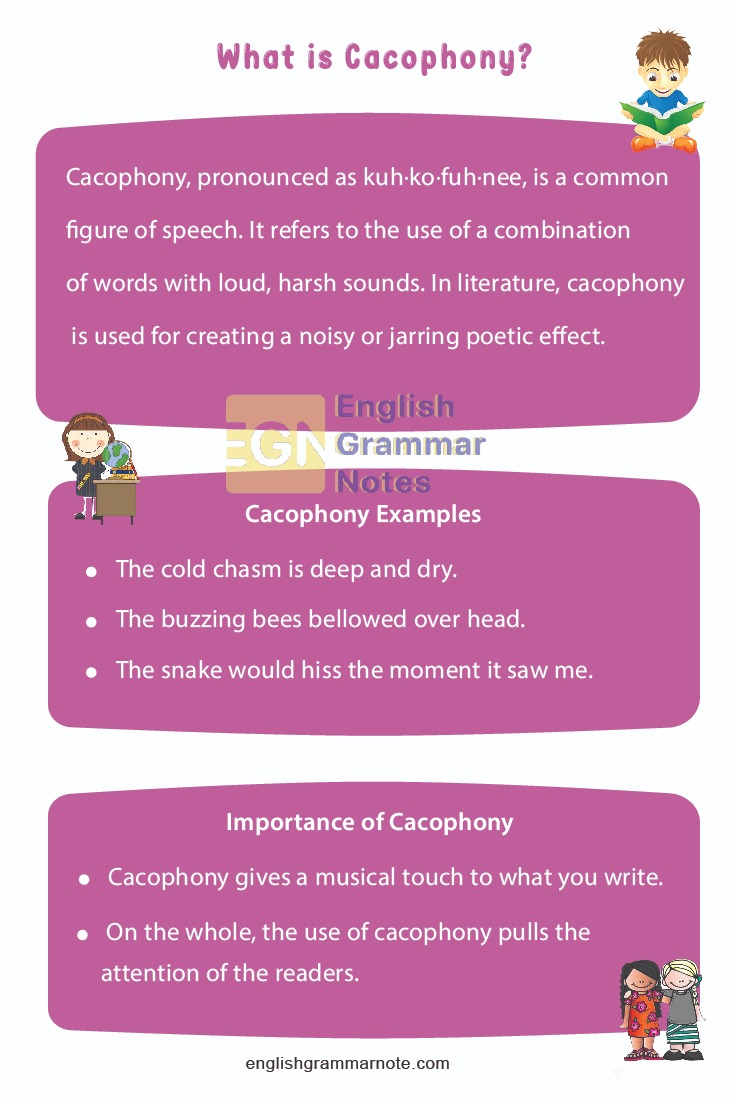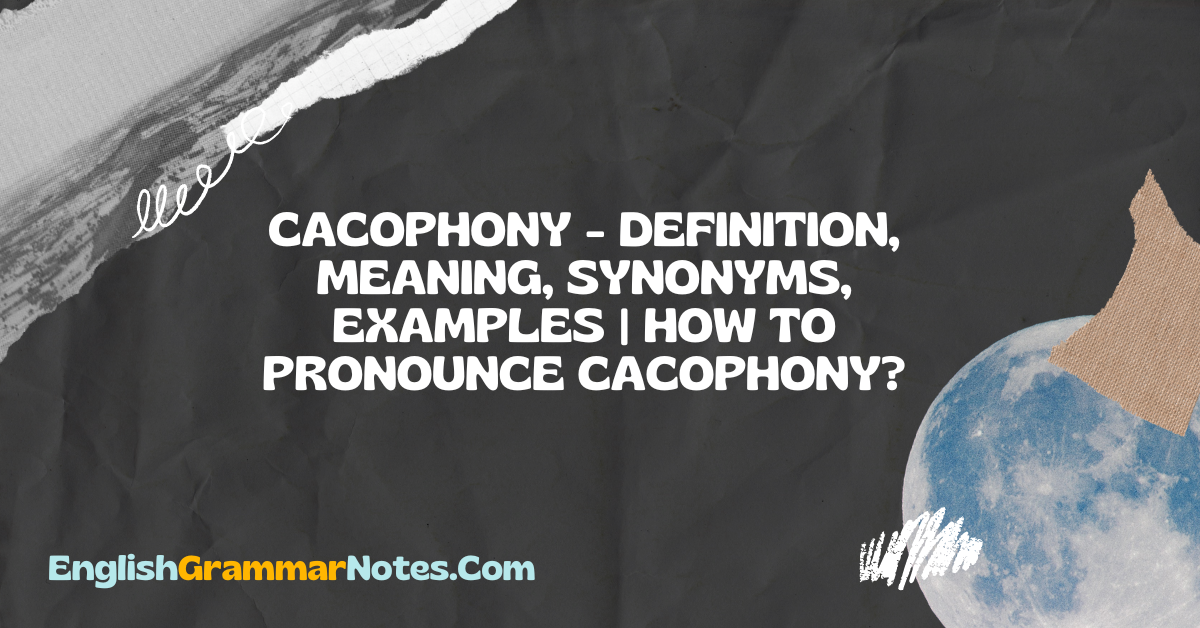You may have often heard of the term cacophony when referring to the English language. As a figure of speech cacophony adds drama and effect to what you write or speak. The word cacophony originated from the Greek word kakophōnos and means ill-sounding. In today’s article, you will get to know what cacophony is. We will also have a look at some examples and the significance of using cacophony.
- What is Cacophony?
- Cacophony Examples
- Importance of Cacophony
- How to Recognise Cacophony?
- Cacophony Vs Euphony
- What is cacophony?
- Give examples of cacophony?
- Differentiate between Cacophony and Euphony?
- What are the benefits of using cacophony?
What is Cacophony?
Cacophony, pronounced as kuh·ko·fuh·nee, is a common figure of speech. It refers to the use of a combination of words with loud, harsh sounds. In literature, cacophony is used for creating a noisy or jarring poetic effect. Cacophony may be achieved by placing nonsense words together. At times very similar sounds are placed together which can result in the creation of an unpleasant sound.
Cacophony Examples
Given below is a list of common examples of cacophony:
- The cold chasm is deep and dry.
- The buzzing bees bellowed over head.
- He has a black heart and he has no love for me!
- My sister makes a shrieking sound every time she sees a spider.
- The serum oozed and slopped out of the drain.
- The snake would hiss the moment it saw me.
- He continuously scratches, scratches her head and scratches her hand
- The bird had large claws that were horrible.
- The dog kept barking at the man.
- During the world war, there was much propaganda.
- The town was left distraught after the attack that took place.
- The rat scraped at the outside of the cage.
- And the villagers never liked you
- They are dancing and stamping on you.
- They always knew it was you.
Importance of Cacophony
The use of cacophony has several benefits:
- Cacophony gives a musical touch to what you write.
- The use of connotative sounds creates disgust, frustration, or interest in the reader.
- On the whole, the use of cacophony pulls the attention of the readers.
Understand English Grammar and its Associated Rules in a Simple Manner by taking help of our English Grammar Notes covering example sentences and how to use the language.

How to Recognise Cacophony?
Sentences that make use of cacophony can be easily identified as they often include harsh consonants or hissing sounds. Some of the letters commonly seen are b, d, g, k, p, s, and t. Consonant blends like ch, sh, tch, etc are also used in the cacophony.
Cacophony Vs Euphony
Cacophony and Euphony are often confused terms. Euphony is the opposite of Cacophony. Euphony is a device that makes use of sweet, melodious sounds for a delicious, beautiful experience of sound in poetry and prose. The vowels, and the semi-vowels, and the nasal consonants l, m, n, r, y are considered to be euphonious. Cacophony makes use of consonants in combinations that need explosive delivery p, b, d, g, k, ch-, sh- etc.
See More:
FAQs on Cacophony
Cacophony is a common figure of speech. It refers to the use of a combination of words with loud, harsh sounds.
2. Give examples of cacophony?
Some common examples of cacophony include:
- They are dancing and stamping on you.
- They always knew it was him.
- The serum oozed and slopped out of the drain
3. Differentiate between Cacophony and Euphony?
Euphony performs the opposite function of Cacophony. As opposed to cacophony, euphony is a device that makes use of sweet, melodious sounds for a delicious, beautiful experience of sound in poetry and prose.
4. What are the benefits of using cacophony?
The use of cacophony attributes a musical touch to what you say or write. Cacophonic sounds create disgust, frustration, or interest in the reader thereby grabbing the attention of the readers.
Conclusion
Cacophony is a figure of speech that adds a more harsh tone to what you write or speak. Cacophony can be used in both written text and in day to day conversation. Cacophony has a very important role in written literature. The appropriate use of cacophony make sure that you grab the reader’s attention.
